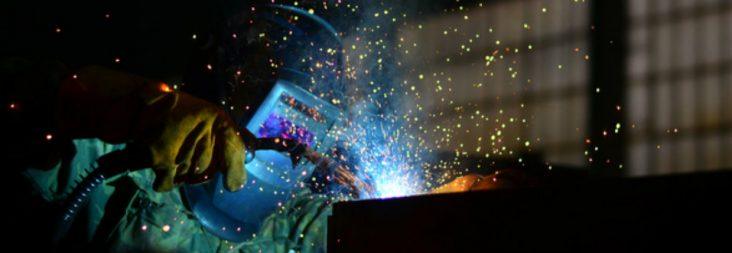U.S. manufacturers sees strong uptick in output, new business in January
by January 25, 2016 5:20 pm 339 views

U.S. manufacturers began the year with a rebound in output and new business growth from the lows seen during December, according to the latest U.S. Manufacturing Purchasing Managers’ Index (PMI) from the Markit Group.
In January, the monthly Markit manufacturing index for the U.S. rose to 52.7 from December’s 38-month low of 51.2 with data signaling a solid upturn in production volumes. It is also the first time the U.S. manufacturing sector’s rate of growth has accelerated since last October, the survey reported.
“The US manufacturing sector found a new lease of life at the start of the year, with growth of factory output and orders both picking up after the slowdown seen late last year,” said Markit Chief Economist Chris Williamson. “Producers appear to have shrugged off worries about China, helped by export orders showing signs of reviving. It looks like weak demand from China is being offset by improved demand for US-produced goods in other markets.”
Similar to the U.S. Institute for Supply management (ISM), the Markit Group compiles PMI surveys on a monthly basis by polling businesses which represent the makeup of the private sector. However, the British group conducts PMI’s for over 30 countries worldwide, while ISM’s data looks solely at the U.S. economy.
According to the upbeat Markit report, survey respondents mainly commented on higher output levels in response to positive new business trends and expectations of improving domestic demand over the months ahead.
Any stability in the U.S. manufacturing sector would be welcome news in Arkansas. The state’s manufacturing workforce continued to decline in 2015. Estimated employment in the Arkansas manufacturing sector was 151,500 in November, down from 152,700 in October and 5,700 jobs fewer than November 2014. Employment in the sector has fallen more than 25% in the past decade.
In other areas of the U.S. manufacturing index, volumes of new work strengthened in January, after coming close to stagnation at the end of 2015. The latest increase in new orders was the fastest for three months. However, new export sales continued to rise at only a marginal pace, which manufacturers generally linked to the strong dollar.
Companies that reported an overall upturn in new work mostly cited improving domestic economic conditions. The main exception to the wider trend was among manufacturers facing cutbacks in new orders from clients in the oil and gas sector. The rebound in total new business growth during January contributed to a stabilization in backlogs of work and an upturn in input buying across the goods-producing sector.
Still, manufacturers remained cautious about their inventory volumes at the start of 2016, with both finished goods and preproduction stocks falling slightly over the month. U.S. factories also indicated a slight slowdown in job creation across the sector in January. The latest rise in payroll numbers was the weakest since September 2015.
Anecdotal evidence suggested that softer overall employment growth reflected a wait-and-see approach to staff recruitment at the start of the year and, in some cases, the need to focus on efforts to reduce costs.
“The employment trend also remained reasonably buoyant, especially given the extent to which stock markets were spooked over the data collection period, suggesting that manufacturers have held their nerve in terms of hiring,” Williamson said.
The British economist said it’s too early to declare that recent slowdown fears are overplayed, but added that U.S. manufacturing sector’s resilience in the face of recent financial market volatility is an encouraging omen for growth and employment in the wider economy.
“Especially as sectors such as transport and business services typically move in the same cycle as manufacturing,” he said.
ISM’s first report on the U.S. manufacturing sector for 2015 is expected to be released on Feb. 1, the first business month of the day. Creighton University Mid-America Business Conditions Index, the regional business and manufacturing index for Arkansas and eight other Midwest states, will also be release early next week.
